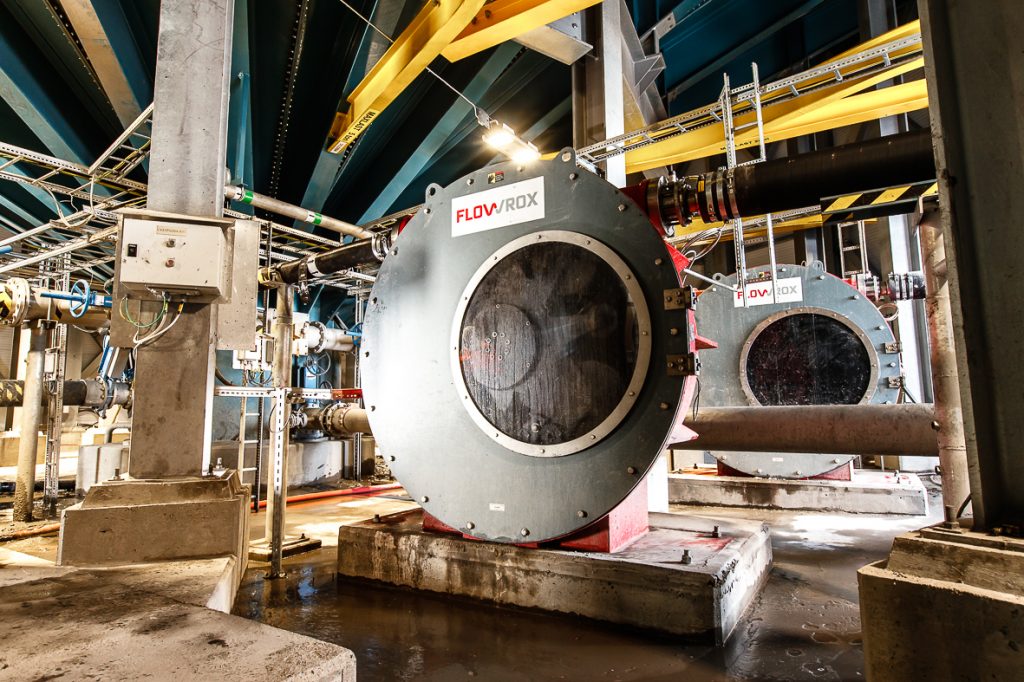Flowrox hose pumps were recently chosen for the LKAB tailings treatment project at the Svappavaara operation based on previous experience. “We first learned about Flowrox hose pumps at a Paste Conference in South Africa and were interested in this pumping technology,” says Thord Wennberg, Technical Process Development, LKAB.
LKAB Svappavaara is one of the oldest pelletising plants in Sweden and LKAB being the second largest producer of iron pellets in the world. With annual production of iron ore products amounting to 26.9 Mt in 2016, the annual tonnage of tailings disposal is also considerable. For decades LKAB used a dam as disposal method for tailings, but in 2012 the company decided to deposit the tailings in Svappavaara at a high solids content and introduced a project to build a tailings thickening facility.
“We used a LPP hose pump for our first thickener, but it was not in operation for longer than one month before we shelved it. We took the pump out of duty as the slurry was so thin that pump was not needed. With our second thickener we knew that our slurry would be thicker, so we decided to have a go with the hose pump again. We were aware of the benefits of Flowrox pumps compared to centrifugal pumps,” Wennberg continues.
For the new plant LKAB chose LPP-T100 transfer pumps that are able to pump up to 76% solids. “The fact that the hose pumps are suitable for paste and high-density slurries is important to us. However, at the moment we are pumping 66 to 70% solids. The capability of the pumps to effectively pump solids is very crucial for us in the water treatment facilities. The slurry is dense enough to enable us to save water and maintain the flow,” states Åsa Partapuoli, Senior Process Engineer, LKAB.
“We have been working with the three pumps in the thickener plant for one year now and they have been operating well. The most important thing for us in terms of pump performance is that they function reliably. All the other benefits come after that. If a pump is not reliable, there is nothing else to benefit from either,” states Ronny Martinson, Maintenance and Operation, LKAB.
“The initial lifetime cost calculation (LCC) for the hose was estimated at three months. After the start up and optimisation of the plant we are now on somewhat of a normal duty. If we increase the pressure and the density, then of course also the wear increases, which affects the LCC,” explains Björn Gardelin, Minrox, the Flowrox representative in Sweden.
“We have experienced that the Flowrox LPP hose pumps handle solids in the slurry better than other pumps, and that’s very good because we have occasionally to deal with large particles,” Martinson says.
“The Flowrox hose pumps incorporate an advanced rolling design were larger particles can be handled in high pressure with minimal wear. The pumps can run dry and be operated 24/7. The pumps’ rolling design eliminates friction, maximises hose life and lowers energy consumption. Flowrox pumps are able to handle up to 76% solids,” Gardelin reveals.
“They seem to work quite well, and there’s no need to change the hoses too often. We are now on a 3-month hose change cycle according to the LCC calculation. As I mentioned earlier, reliability is something that we look for in a pump. Now we are looking into expanding the hose lifetime to 6 months. The only challenge has been the hose change due to the large size of the hose and the roll. Luckily, they do not have to be changed more often than four times a year,” Martinson adds.
“We are now looking into training the LKAB maintenance staff to provide techniques and safety for the hose change, which will make the work easier and faster but also safe,” says Gardelin describing the future cooperation with LKAB. LKAB’s ambition is to increase production by 5 percent a year up to 2021.This will entail increasing capacity and efficiency also in the waste and tailings treatment. LKAB has already placed an order for fifth pump for the project.











